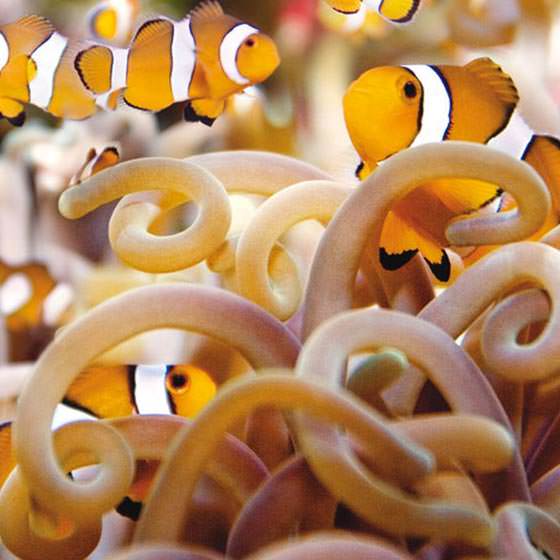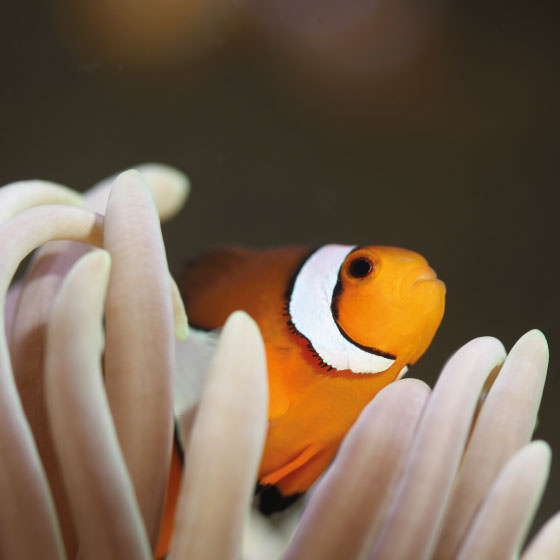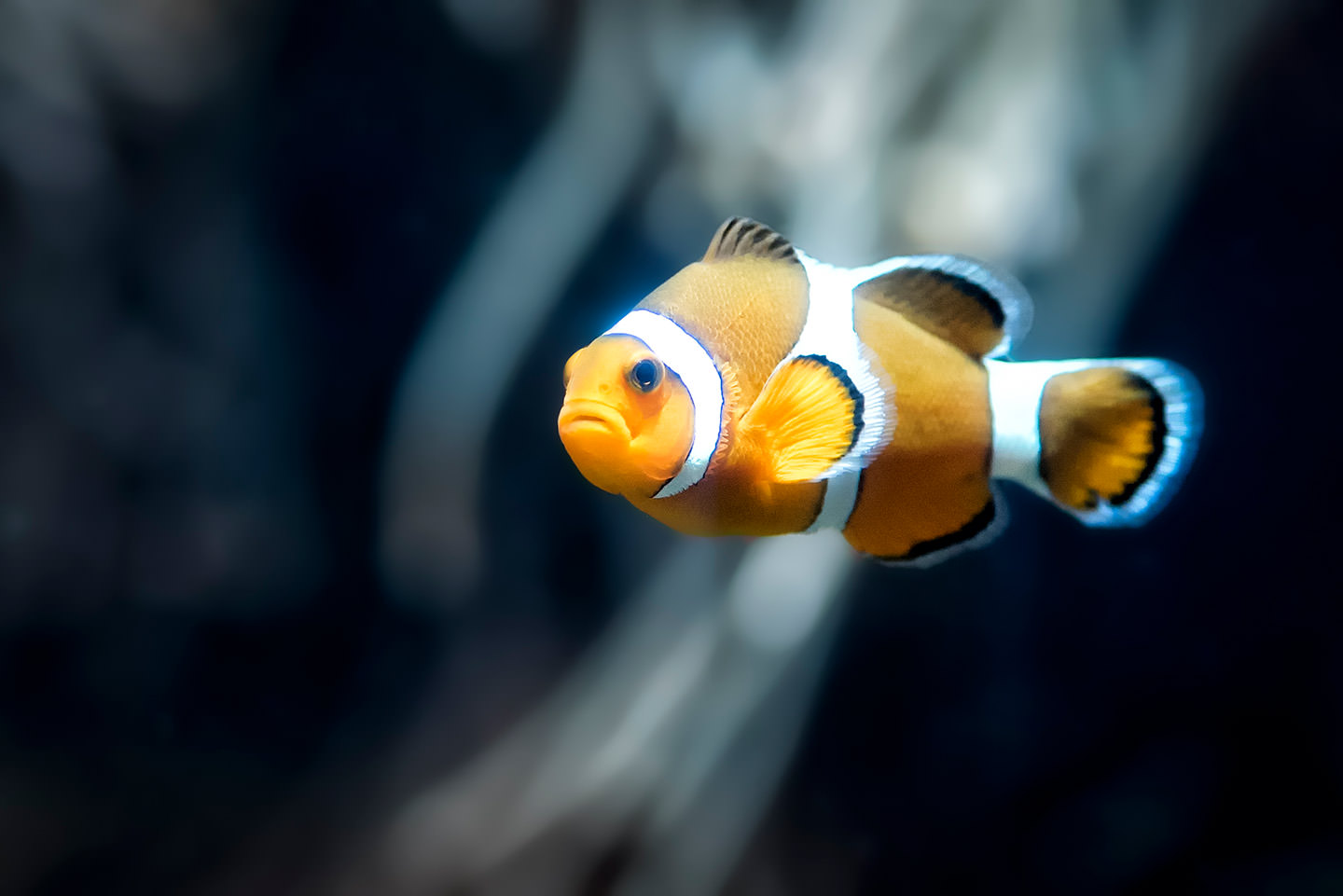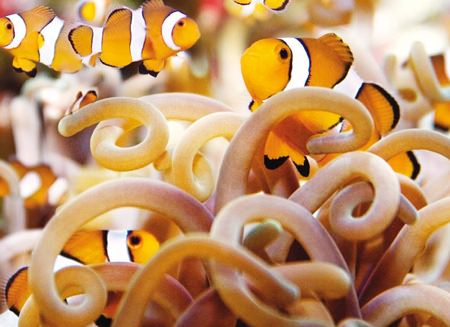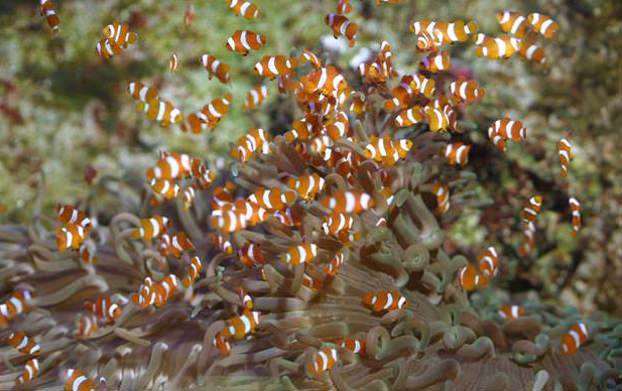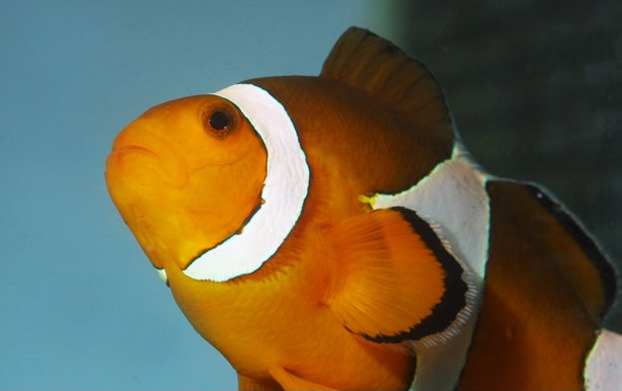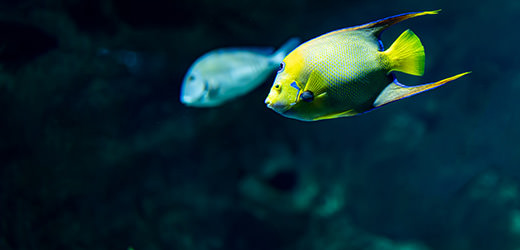Environment
Clownfish are the only fish that can survive the touch of the venomous tentacles of sea anemone, which provide them with protection from predators.
This symbiosis is made possible because the juvenile clownfish coat themselves with the anemone’s mucus by brushing against them over and over. That mucus contains a substance than inhibits the effects of the anemone’s stinging cells. This clownfish only lives symbiotically with two species of anemone: Heteractis magnifica and Stichodactyla gigantea.
According to one behavioural study, the orange clownfish is the one that leaves its host anemone the least: it almost never moves more than 12 cm away!
